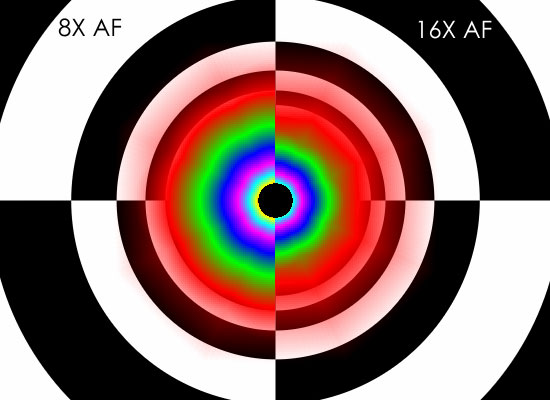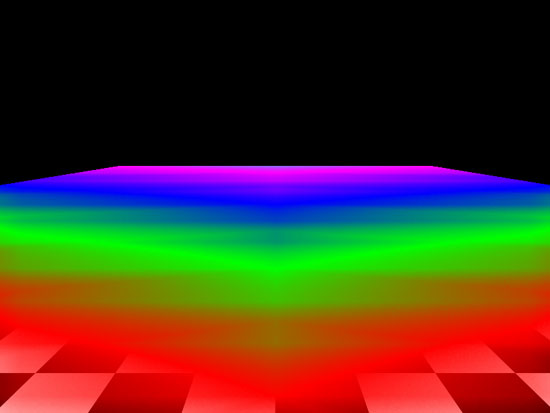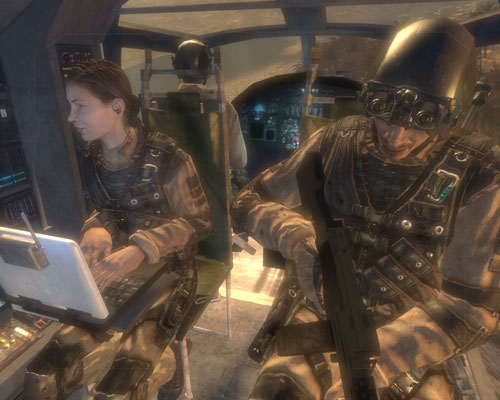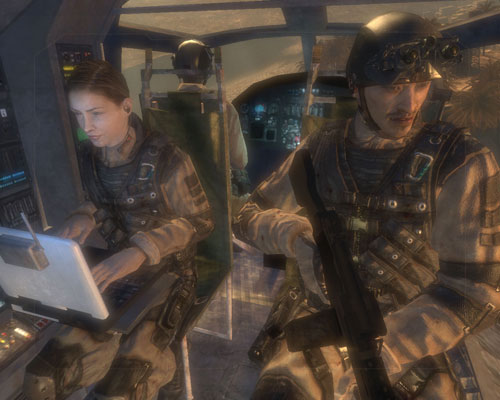ATI Radeon HD 2900 XT: Calling a Spade a Spade
by Derek Wilson on May 14, 2007 12:04 PM EST- Posted in
- GPUs
General Image Quality
Beyond antialiasing, there are quite a number of factors that go into making real-time 3D look good. Real-time graphics are an optimization problem, and the balance between performance and quality is very important. There is no single "right" way to do graphics, and AMD and NVIDIA must listen carefully to developers and consumers to deliver what they believe is the sweet spot between doing things fast and doing things accurately.
NVIDIA currently offers much more customizable image quality. Users are able to turn on and off different optimizations as they see fit. AMD really only offers a couple specific settings that affect image quality, while most of their optimizations are handled on a per game basis by the ominous feature known as Catalyst A.I. The options we have are disabled, standard and advanced. This doesn't really tell us what is going on behind the scenes, but we leave this setting on standard for all of our tests, as this is the default setting and most users will leave it alone.
Aside from optimizations, texture filtering plays a large role in image quality when high levels of filtering are called for. It's trivial to point sample or bilinear filter, and no one skimps on these duties, but when we get to trilinear and anisotropic filtering the number of texture samples we need and the number of calculations we must perform per pixel go up very quickly. In order to mitigate the cost of these operations, both AMD and NVIDIA attempt to apply high levels of filtering where they are needed and not-so-high levels of filtering where it won't matter that much. Of course there is much debate over where to draw the lines here, and NVIDIA and AMD both choose different paths.
To investigate texture filtering quality, we have employed the trusty D3D AF-Tester. This long-lived application enables us to look at one texture with different colored mipmap levels to see how hardware handles filtering them under different settings. Thankfully, we don't have to talk about angle dependent anisotropic filtering (which is actually a contradiction in terms anyway). AMD and NVIDIA both finally do good quality anisotropic filtering that results in higher resolutions textures being used more of the time where possible. Take a look at these images to see how the different hardware stacks up.

NVIDIA G80 Tunnel 8x/16x AF
G80
R5xx
R6xx
It still looks like NVIDIA is doing slightly more angle independence filtering. In practice, it will be very difficult to tell the difference between an image rendered on AMD hardware and one rendered on NVIDIA hardware. We can also see that AMD has slightly tweaked their AF technique to eliminate some of the odd transitions we noticed on R5xx hardware. This comes through a little better if we look at a flat plane:

AMD R600 Plane 8x AF
R5xx
R6xx
We did happen to notice at least one image quality issue not related to texture filtering on AMD hardware. The problem turns up in Rainbow Six: Vegas in the form of very bad banding where we should see HDR lighting. We didn't notice this problem on G80, as we can see from our comparison.
  |
| Click to enlarge |
We also noticed a small issue with Oblivion at one point where the oblivion gate shader would bleed through other objects, but this was not reproducible and we couldn't get a screenshot of it. This means it could be a game related issue rather than a hardware or driver problem. We'll keep our eyes peeled.
Overall IQ of the current DX10 hardware available is quite good, but we will continue to dig further into the matter to make sure that everything stays that way. We're also waiting for DX10 games before we can determine if there are other differences, but hopefully that won't be the case as DX10 has a single set of requirements.










86 Comments
View All Comments
dragonsqrrl - Thursday, August 25, 2011 - link
You forgot c).-if you're an ATI fanboy
vijay333 - Monday, May 14, 2007 - link
http://www.randomhouse.com/wotd/index.pperl?date=1...">http://www.randomhouse.com/wotd/index.pperl?date=1..."the expression to call a spade a spade is thousands of years old and etymologically has nothing whatsoever to do with any racial sentiment."
strikeback03 - Wednesday, May 16, 2007 - link
What about in Euchre, where a spade can be a club (and vice versa)?johnsonx - Monday, May 14, 2007 - link
Just wait until AT refers to AMD's marketing budget as 'niggardly'...bldckstark - Monday, May 14, 2007 - link
What do shovels have to do with race?Stan11003 - Monday, May 14, 2007 - link
My big hope out all of this that the ATI part forces the Nvidia parts lower so I can use my upgrade option from EVGA to get a nice 8800 GTX instead of my 8800 GTS ACS3 320. However with a quad core and a decent 2GB I have no gaming issues at all. I play at 1600x1200(when that become a low rez?) and everything is butter smooth. Without newer titles all this hardware is a waist anyways.Gul Westfale - Monday, May 14, 2007 - link
the article says that the part is not a failure, but i disagree. i switched from a radeon 1950pro to an nvidia geforce 8800GTS 320MB about a mont ago, and i paid only $350US for it. now i see that it still outperforms the new 2900...one of my friends wanted to wait to buy a new card, he said he hoped that the ATI part was going to be faster. now he says he will just buy the 8800GTS 320, since ATI have failed.
if they can bring out a part that competes well with the 8800GTS and price it similarly or lower then it would be worth buying, but until then i will stick with nvidia. better performance, better price, and better drivers... why would anyone buy the ATI card now?
ncage - Monday, May 14, 2007 - link
My conclusion is to wait. All of the recent GPU do great with dx9...the question is how will they do with dx10? I think its best to wait for dx10 titles to come out. I think crysis would be a PERFECT test.wingless - Monday, May 14, 2007 - link
I agree with you. Crysis is going to be the benchmark for these DX10 cards. Its hard to tell both Nvidia and AMD's DX10 performance with these current, first generation DX10 titles (most of which have a DX9 version) because they don't fully take advantage of all the power on both the G80 or R600 yet. Its true that Crysis will have a DX9 version as well but the developer stated there are some big differences in code. I'm an Nvidia fanboy but I'm disappointed with the Pure Video and HDMI support on the 8800 series cards. ATI got this worked out with their great AVIVO and their nice HDMI implementation but for now Nvidia is still the performance champ with "simpler" hardware. The G80 and R600 continue the traditions of their manufacturers. Nvidia has always been about raw power and all out speed with few bells and whistles. ATI is all about refinement, bells and whistles, innovations, and unproven new methods which may make or break them.All I really want to wait for is to see how developers embrace CUDA or ATI's setup for PHYSICS PROCESSING! Both companies seem to have well thought out methods to do physics and I cant wait to see that showdown. AGEIA and HAVOK need to hop on-board and get some software support for all this good hardware potential they have to play with. Physics is the next big gimmick and you know how much we all love gimmicks (just like good 'ole 3D acceleration 10 years ago).
poohbear - Monday, May 14, 2007 - link
they dont make a profit from high end parts that's why they're not bothering w/ it? that's AMD's story? so why bother having an FX line w/ their cpus?